The living bubble cities of California – Pasadena property falls over 50 percent in 7 years. 27 foreclosures listed on MLS while 553 properties remain in the shadow inventory. $1.8 million multi-property sale to $330,000?
The weak jobs report signifies more trouble for housing. Even though the official headline unemployment rate ticked up 0.1 percent the broader U6 measure went up 0.4 percent. The fragile housing market is walking on eggshells and employment is directly tied to the health of household income. Moving forward if we are to see any measurable gains in home prices it will come from growing household incomes. An interesting report showed that if household incomes kept pace with productivity since the 1970s household incomes would be closer to $92,000 a year instead of the current $50,000. In California with absurdly high home prices, it would appear that the gain in home values came at the hands of exotic financing, low to no down mortgages, and a general psychological mania. Yet the most important driver in household incomes was largely absent and the new employment report is not encouraging especially with millions of homes in the shadow inventory that need to be moved. Today we’ll examine some of the interesting housing behavior during the bubble in the still inflated city of Pasadena.
From $1.8 million to $330,000
162 NORTH PARKWOOD AVENUE, Pasadena, CA 91107
BEDS:Â Â Â 2
BATHS: 1
SQ. FT.: 1,158
$/SQ. FT.:Â Â Â Â Â Â Â Â Â Â Â $285
LOT SIZE:Â Â Â Â Â Â Â Â Â Â Â Â Â 8,000 Sq. Ft.
PROPERTY TYPE:Â Â Â Â Â Â Â Â Â Â Â Â Â Â Residential, Single Family
STYLE:Â Â California Bungalow
VIEW:Â Â Â Faces West
YEAR BUILT:Â Â Â Â Â Â Â 1913
COMMUNITY:Â Â Southeast Pasadena
On a quick search I managed to find 27 foreclosures (actual SFR) in Pasadena actively listed. The above home is 1,158 square feet with 2 bedrooms and 1 bath. The place needs a lot of work:
It looks like a remodel was taking place here:
Pasadena is still definitely in a large housing bubble. These are the kind of properties that are sitting on bank balance sheets. This home clearly will need a lot of work. The 91107 zip code of Pasadena currently has a median sales price of $640,000 which may make this seem like a bargain to some people. Yet virtually every zip code in the city is still reflecting delusional beliefs in home values:
Source:Â Data Quick
Prices overall have come down from their peak levels but as you can see from this home, it still requires a large amount of work. This is from the listing:
“Property adjacent to commercial on a quiet side street, was a Craftsman but has been gutted inside and some modifications have been made by former owner, seller has no knowledge. Reportedly, property is zoned RM16 and had an approved plan for the demo of the house and to build 3 1800 square foot condo’s, buyer to check for themselves with the City of Pasadena. Seller will make no repairs and makes no representation.â€
You can see that during the peak days of the bubble someone actually paid a nice amount for this place:
Source: Redfin
Back in August of 2004 this home was sold in what appears to be a multi-property sale for $1,825,000. It sold again in 2005 and then sold a few more times. Seeing the needed work in the place above, it seems that many potential speculators had bigger ideas for this place since the home still has a lot of work to be done. It looks like the last sale price was back in 2008 for $535,000 before it became bank-owned this May for $330,500. The current listing price is $330,000.
Is this now a deal? Now someone looking at the public MLS might think that only 27 properties are listed as foreclosures in Pasadena. This market is plagued with shadow inventory. If this is only one of the examples being leaked out onto the market, what else remains bottled up in the balance sheet of banks? In reality, the distressed inventory in Pasadena is shocking:
Over 553 properties in Pasadena are either bank-owned, scheduled for auction, or have a notice of default filed. The above property requires a tremendous amount of work. Hard to say how much is needed to make it move in ready but tens of thousands of dollars at a minimum is needed. The place is also very close to the 210 freeway:
So assume someone purchases this place with an FHA insured loan. What does the monthly payment look like?
Down payment amount:Â Â Â Â Â Â Â Â Â Â Â Â Â $11,500
PITI: $2,223
Make move in ready:Â Â Â Â Â Â Â Â Â Â Â Â Â Â Â Â Â Â Â Â ???
The above doesn’t factor in the amount you need to fix this place up to make it move in ready. Keep in mind we are looking at a property that in 2011 is selling for well over 50 percent off in Pasadena. Do you think this is a good deal? Does this property make for a good investment?
Did You Enjoy The Post? Subscribe to Dr. Housing Bubble’s Blog to get updated housing commentary, analysis, and information

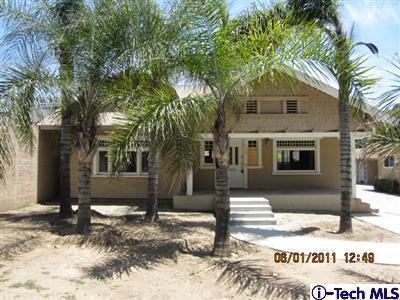
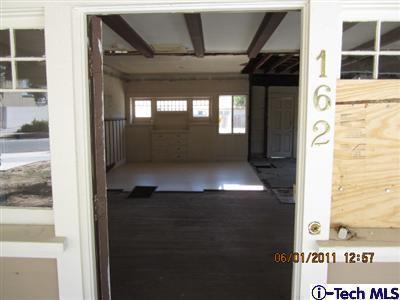
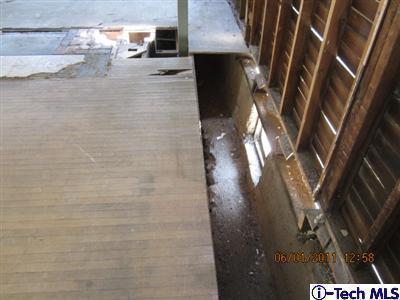
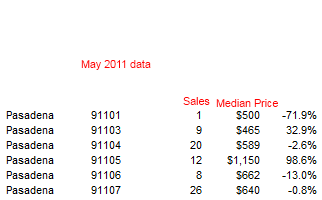
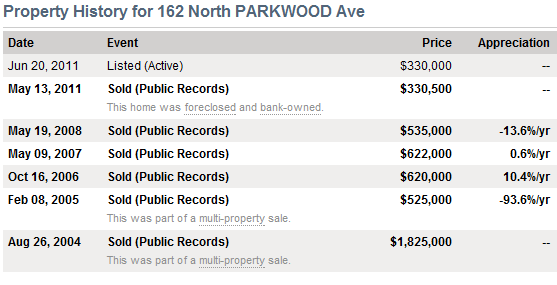
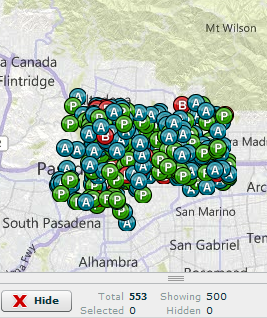
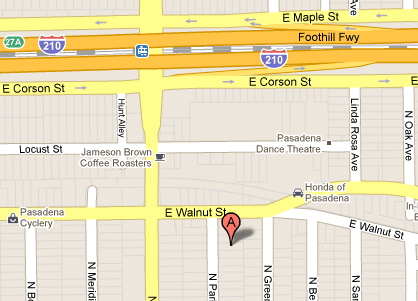
 Did You Enjoy The Post? Subscribe to Dr. Housing Bubble’s Blog to get updated housing commentary, analysis, and information.
Did You Enjoy The Post? Subscribe to Dr. Housing Bubble’s Blog to get updated housing commentary, analysis, and information. Subscribe to feed
Subscribe to feed






29 Responses to “The living bubble cities of California – Pasadena property falls over 50 percent in 7 years. 27 foreclosures listed on MLS while 553 properties remain in the shadow inventory. $1.8 million multi-property sale to $330,000?”
Ah, my hometown…that house pictured is not in the greatest of ‘hoods, quite industrial up around there. If you want to see some pricey places, check out the 91105.
No amount of patchwork will keep the SoCal bubble intact indefinitely. If they let out all the air at one time it would probably be worse than this slow burn. I think part of this is all about us being trained like rats by Manhattan via Hollywood. We think that everyone is living like in the movies and if we live simply we’re somehow deficient with respect to others. One of the great lessons of the previous Depression (four years in and we still pretend the thing ended in 2009. I bet more people think Casey Anthony is innocent) is that we became a lot less arrogant and realized we better get to work if we want to survive.
Fortunately for US, the Khazars in Manhattan and London got Europe and Asia to destroy themselves so we could have an industrial monopoly for a decade or so. That’s not going to happen again so we’d better face reality that we are not blessed by God to be superior to the rest of the world, and if we don’t get our act together, the emerging nations will eat the rest of our lunch…this is just a small sample of the Apocalypse coming. We can’t all be Walmarx cashier’s–we have a fiscal doomsday bomb with the fuse burning. We need to balance our input and output or market forces will do it for us.
To be fair. This could have been part of a commercial property deal that went up in smoke. I’m not exactly sure that the price is all that great even if you could put three multi unit condo’s on the spot. I wish the Dr would pick some nicer looking homes though. It makes me tired, sad, and mad just looking at it. This home in the midwest would fetch about 20k to 40k.
Kurt
Kurt
20K to 40K elsewhere is Dr. HB entire point of this article and website. California is in the forefront of deception. The housing prices do not fit the housing incomes. Most houses in SoCal would sell 1/2 to 1/3 the price in most other states. And in other states you receive the inverse 2x to 3x more lot space. There is nothing special about the wood and construction here. We have stupidity and I gotta “be like” mentality to thank for ruining something sacred. EverYthing is now a Commodity.
I just want to suggest to the readers of this blog that they read “Reckless Endangerment” by Morgenson and Rosner. It shows, at least in part, how the FHA fed the mortgage-housing bubble.
Dr. Housing, you wrote, “An interesting report showed that if household incomes kept pace with productivity since the 1970s household incomes would be closer to $92,000 a year instead of the current $50,000.”
You mentioned similar themes in past blogs as well. I’m curious as to why you think household incomes would rise with productivity increases. Theoretically, there are many ways a typical business could increase productivity, but in practice productivity gains are derived from cutting wages, or at least not raising them.
Workers that are paid by the piece, such as orange pickers, see their wages rise with an increase in their productivity. But all over workers, be they hourly or salary, may get a pay raise for working in a more productive fashion, but often not.
The easiest way for many companies to dramatically increase productivity is to move the factory to China, which means cutting American worker pay to zero. If you have been to an airport, you can see another method to increase productivity. First of all, the airlines pawned off security to the government. Secondly, they now have many fewer employees, and like self checkout machines in grocery stores, they rely heavily on self serve kiosks.
“The easiest way for many companies to dramatically increase productivity is to move the factory to China, which means cutting American worker pay to zero. If you have been to an airport, you can see another method to increase productivity. First of all, the airlines pawned off security to the government. Secondly, they now have many fewer employees, and like self checkout machines in grocery stores, they rely heavily on self serve kiosks.”
It’s “the easiest way” to go broke, too: no customers when they have no jobs. And those cheap Chinese laborers? They don’t get paid enough to buy what they make either…a “lose-lose” situation after everything easy gets looted.
farang–I couldn’t agree more. I didn’t mean to imply that I’m a cheerleader for the exportation of jobs. Just saying that productivity gains are a function of outsourcing, to a large degree, and therefore unsustainable, on a macro level, as you so accurately pointed out.
As far as your comment about Chinese laborers not making enough to purchase what they make, that is true. And they don’t make enough to purchase homes in Chinese cities either. The current housing bubble in China is like ours in many respects, except theirs hasn’t popped yet. Speculators are running up the prices of homes, hoping to sell them to a greater fool. Sound familiar?
Jason, are you getting profitability and productivity mixed up? Productivity is the output per man-hour, while profits are increased by increasing revenue or by cutting cost. Thus you can increase profits without increasing productivity (for example by moving to China).
What DHB is talking about is that productivity of workers in the US has increased but incomes haven’t followed suit. Instead increased productivity resulted in increased profits for the shareholders.
Wrong. Shareholder profitability expressed as dividends has gone way down. What’s happened is management has paid itself the increase in productivity. Look what we’ve seen. Executive pay is on a tear. Nothing else comes close.
Sorry this is so off topic but I couldn’t let it go. People have to start realizing shareholders may legally own public companies but they have no power over management. That is why management has gotten filthy rich, while all shareholders get is a gamble on what the stock market does.
Thanks Dr.
What continues to sicken me is that even in this economy there are plenty of professional couples like my wife and I who would love to buy a home, but continue to be priced out of decent working, middle class neighborhoods, You could substitute Burbank for Pasadena and it’s the same story. Is it worth it to pay move in price for a fixer. Hell no!!!! There are only fixers in Burbank that are remotely close to $330,000. I wouldn’t wish the hell of having to fix a home when you can barely make the PITI on anyone. I’m gonna sit in my Burbank rental and ride out the nonsense.
I think the only ones who are in this market for real are hard core all cash investors who know exactly what they are doing. Buyer beware even those just painted houses have plenty of secrets in them walls.
You know what they say….drive til you qualify. Californians are a bit spoiled as compared to other states. In many states folks get up at the crack of dark to comute to the city for work. Yes they do have access to public transportation but we have freeways, car and van pools, metrolink, etc. I actually had to take my RV and park it in an area where I can make a living during the week and comute to the home I can afford in the area I want to live in on the weekends over 2 hours in each direction so I do feel your pain.
What makes you think people don’t commute in California? Insane commutes is one of the things that often drives people to other states. (This is also why the 405 closure was being treated as such a big deal. Everybody can remember a day when some critical section like the Supulveda Pass got shut down by an accident and backed up traffic for a massive radius.)
During the late 80s and early 990s there was a great exodus out of LA into the Antelope Valley, meaning Palmdale and Lancaster. The new houses were far less costly than old units in the San Fernando Valley and other largely residential sections of the county. But there wasn’t much in the way of jobs out there in the desert. So a massive horde would could up the 14 every morning at the crack of dawn or earlier to get to their LA jobs.
It sucked. It really, really sucked. And so did Palmdale/Lancaster. When my brother and a dozen friends and acquaintances all moved into new neighborhoods in Palmdale, I would always notice that the adjoining tract, built a few years earlier, looked really run down. Like you’d expect if you were sent to examine Section 8 neighborhood.
Sure enough, within five years my brother’s neighborhood looked the same. He had the only house on his block that had a lawn. Most of the others had a crop of weeds, not even attempting to do something low maintenance to suit the local climate.
My brother and nearly all of those other I knew who moved there in that era, took losses just to escape without a bankruptcy. It wasn’t the commute that broke them. It was being the only person on the block who didn’t want to live in a barrio. If the neighborhoods hadn’t gone to crap they would have kept it up a lot longer. But the whole point of a long commute is to go home to something nicer than what is available near your job. Take that away and the commute is just adding insult to injury.
Same here.. renting in Burbank since 2000..will not buy in Burbank until prices fall down to reasonable levels at pre -2001 boom.
CC….I totally agree. I’ve been renting in Burbank for years. I stayed home with my kids for about 9 years while hubby worked, and watched in horror as I was priced out of the market. I am back to work, and we’re doing much better. The sad thing is that we still can’t afford a house in Burbank, and we’re making good money. Okay, well maybe we could scrape it together to pay for a $330k home, but honestly, I wouldn’t pay what they are asking for a home either. Nor will I leave my 1500 sq ft apt that I’m paying only $1300 a month for to pay over $2000 just to rent an 850 sq ft house. I would love, love, love a yard and I would love to have a home, but I think I’m being pushed out of Burbank, the city I grew up in. I’m glad others feel that the prices are still too high. I was wondering if it was just me. Who the heck is buying these places? BTW…on Walnut, a street with some fairly nice size homes/lots, there are two houses that have been sitting empty for over a year. One of them appears to be for sale. Why not just let my family and I move in? It’s just sitting there! We’re great neighbors! We would fix up the yard and everything! We just won’t pay anything near $2000 a month for it! 🙂
Burbank is nuts!!! It’s a nice city, but not “that nice”. The only reason we stay is that the school district and services are better off than Los Angeles, which continues to have it’s credit rating downgraded.
I keep telling myself to be patient, someday the chickens will come home to roost, or, how long can they push on a string before they realize it won’t move forward.
Just saw a dump on Trulia: 234 Niagara sell in 350 range, and now listed at 396. Someone is trying to flip a Burbank dump for 40K. Idiots!!!
Wowwwww!!! I can’t believe that someone is actually still trying to flip a house in this economy. Well…actually I can, because people still haven’t overcome their greed from the housing boom. That’s part of the reason I believe that the financial problems continue. Denial.
Burbank isn’t that great anymore. I stay here for the exact same reason. I work for BUSD, and I’ve been impacted not just by the fact that I can’t buy a home in Burbank, but because they cut my hours. It’s one smack after another. Thankfully, I’m working for another, non-school related company, and I’m hoping that things will finally improve for my family.
I have totally given up on ever buying something in Burbank. Besides the cost of housing, I have my other reasons for not wanting to buy here, but regardless, I figure the only home I will ever own is my retirement home in an area worth living in.
Kelly
How in the world did a 1158 sq ft, 2 bar, 1 ba sell for $1.8M? I lived in Pasadena for a year or two. It’s not *that* nice.
Only south west Pasadena is “that” nice!
nice
Profs “west’s govs borrow to pay inter. only cannot pay principal.
U + S total pub pv debts $200 tril 12 zero, gdp$14t/yr, p i i g s broke, will
default”
Relocated from So Cal to Manhattan about a year ago. This probably the only place in the country that makes So Cal look cheap. But guess what? 75% of the people living in Manhattan are renters. And rents keep going up – about 10% in the last 3 months so you get to rent a nice 600 sq ft one BR apt for 3300 instead of 3000. Nice building with nice amenities but not much space. In any case, my guess is that So Cal will become a land of renters just like Manhattan because no one willl have the income to qualify for a real mortgage. And only the very wealthy will be buyers, much like Manhattan where the wealthy pay $2000 per sq ft and think nothing of it.
I think you are right on that one!
Rent might be going up in selective beach cities, but here in the heart of the San Gabriel Valley, rents are coming down. I was able to renegotiate my rent with my landlord, and drop it 10% for another term. Good renters are hard to find – those that have good credit and don’t destroy your home are ones you want to keep.
They aren’t coming down in the desirable parts of Pasadena and the city of South Pasadena. These areas are very unlike the the mostly deplorable SGV.
cash only, no bank will fiance this dump
I live in Pasadena in the 91107 (albeit about a mile east of this), but equally close to the freeway. My wife and I rent a 2 bd, 1 bath, 1000 sq footer, on a 7,000 foot lot, freestanding garage. Per the current value on zillow, we pay our landlord right around 5% of the current value of his house per year. A year ago it was 4% but the estimated value has been dropping… Whether at 4% or 5%, renting is still so much cheaper than owning that we can’t see going there (even though I’m a decent handy man and would like to) when the outlook is somewhere between cataclismic price drops and flat.
I live exactly 5 streets to the west of this house. And, I have been looking at buying for some time. Still waiting.
If this home was in livable condition, with decent fixtures and not fraught with any major problems, the asking price would be appropriate. But, it is obviously not in such condition.
I would say a respectable asking price – based on the apparent conditions – would be in the $225 to $240 per square foot range.
But, I am not interested in the neighborhood. I live in a really good townhome, but Walnut Avenue is filled with auto repair shops and so forth. It is a bit dreary. Pasadena City College is not far. Nice campus. The Gold Line is very close too… another plus.
When i moved to CA in early 2005, i bought a condo in Encio. I was astounded at the prices of places here, compared to my small east coast town.
I was making about 65 to 70K per year, working part time, so i didn’t really want to pay more than 180k for a place to live. I had 50-60k to use as a down-payment. I wanted to live in the Valley. I had conveyed all this to my buyer’s broker via email before making a trip out to Los Angeles to tour the available places (with the broker).
Based on my income, and down-payment amount, the realtor and her loan broker friend, whose office was in the same building as her’s, devised a price range that i could afford………………..using a 5 year ARM cov. loan. This was not discussed with me previous to me showing up, ready to tour properties. On day one of the tour, she drove me to places that seemed outside my price range, and seemed to be terribly overpriced, based on my rather un-comprehensive knowledge of my east coast market (i was always a renter, back there). Teeny little one bed, 400-600 sq ft condos with 250-300 dollar per month HOAs, were selling for 220-350K. The realtor made it out like i could easily afford one of these, based on my situation, but hadn’t gotten around to telling me about the ARM loan she and her loan broker had devised for me. I was quite skeptical that i could actually afford something over 200k, and asked to see a few properties below that range. She drove me to a few such places, but they looked a bit distressed and they weren’t in the best neighborhoods, according to her (and i could kind of agree with her, based on quick visual surveys). Thus it was that i bought into the realtor’s idea that i could afford something in the 200-250k price range.
I found a place that looked like a good deal, compared to most of the others in the price range: it was a two story, one bed, 980 sq ft. townhouse, with a modern interior (recessed lighting/track lighting, newly remodled bathrooms, the upstairs one having a jacuzzi and large tiled, walk in shower with a floating glass door, the ceilings upstairs were quite high, with a wood plank/open cross beam design, incorporating a skylight in the hallway, the bedroom was huge, and had a walk in closet that was big enough to be a second bedroom (I actually sleep in there, since it’s the quietest place in the condo), downstairs had brand new pergo-wood floors, the front door opened into a outdoor walkway inside the complex (there were no hallways or elevators or such), and it had central a/c and heat. It was a marvel compared to even the small 600 sq ft condos i saw that looked like they hadn’t been updated since the 1960’s or 70’s, with a/c units sticking out the sides of their walls, but were somehow priced at 300K.
The reason i was getting such a “good deal” was that the previous owners were trying to finalize a divorce and were trying to sell quick, and i was coming in right after a botched sale had occurred (where the buyer couldn’t achieve funds). The realtor too had me convinced i was getting instant equity, and the price would continue to go up. I thought, if nothing else, i would sell in a few years and grab the equity. I bought for 255K, after haggling.
Indeed the price did go up to the 350K over the next year or two. But by then i was already comfortably settled, and by then, knew i had good neighbors who would let me loudly compose music at 2am (because the noise barriers in the place were quite good), and knew i could walk around at 10pm at night without getting mugged. So if i were to sell, i might end up in a tiny apt, somewhere terrible, with walls as thin as paper. I didn’t want to move to cash in, even though i watched my neighbor sell for 330K after only 5 days on the market.
After the market began to sour, i have seen (according to Zillow) my place dip as far down as 160K and is now floating in the 220K range (-35K compared to purchase price). I’ve dumped 100k into the principle over 5 years time, but am still not out of the rough water. Right now, the ARM is working to my benefit and I’m only paying about 4K in interest per year. But here in 3 or 4 years, if i don’t put in another 50K on the principle and refinance, I’m going to be screwed. I already feel screwed for overpaying 70-90k what the true market value was, if the bubble’s mechanics hadn’t been at work. That 70-90k i shouldn’t have paid, could be going to a nice retirement investment right now and be worth loads more when i retire in 30 years. Instead it’s going to the seller’s nice retirement. I’m working as an indentured servant to the seller for 5-10 years of my life (or even more considering what that money would be worth in 30 years).
I have but one point I’m trying to make: Never underestimate the realtor’s part in driving up the price of properties for sale. It’s happening right now, I would guess.
A broken-down dump like that for $330k! There certainly is a bubble in human folly.
Leave a Reply to ACG